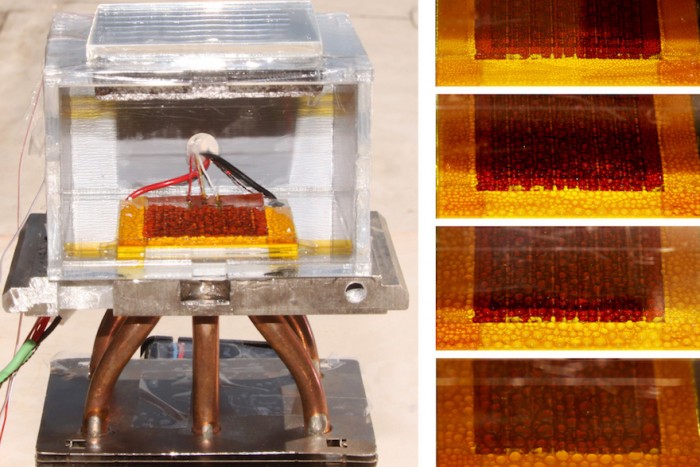Severe water shortages already affect many regions around the world and are expected to get much worse as the population grows and the climate heats up. But a new technology developed by scientists at MIT and the University of California at Berkeley could provide a novel way of obtaining clean, fresh water almost anywhere on Earth, by drawing water directly from moisture in the air even in the driest of locations.
Technologies exist for extracting water from moist air, such as “fog harvesting” systems that have been deployed in a number of coastal locations. And there are very expensive ways of removing moisture from drier air. But the new method is the first that has the potential for widespread use in virtually any location, regardless of humidity levels, the researchers say. They have developed a completely passive system that is based on a foam-like material that draws moisture into its pores and is powered entirely by solar heat.
The findings are reported in the journal Science by a team including MIT associate professor of mechanical engineering Evelyn Wang, MIT postdoc Sameer Rao, graduate student Hyunho Kim, research scientists Sungwoo Yang and Shankar Narayanan (currently at Rensselaer Polytechnic Institute), and alumnus Ari Umans SM ’15. The Berkeley co-authors include graduate student Eugene Kapustin, project scientist Hiroyasu Furukawa, and professor of chemistry Omar Yaghi.
Fog harvesting, which is being used in many countries including Chile and Morocco, requires very moist air, with a relative humidity of 100 percent, explains Wang, who is the Gail E. Kendall Professor at MIT. But such water-saturated air is only common in very limited regions. Another method of obtaining water in dry regions is called dew harvesting, in which a surface is chilled so that water will condense on it, as it does on the outside of a cold glass on a hot summer day, but it “is extremely energy intensive” to keep the surface cool, she says, and even then the method may not work at a relative humidity lower than about 50 percent. The new system does not have these limitations.
For drier air than that, which is commonplace in arid regions around the world, no previous technology provided a practical way of getting water. “There are desert areas around the world with around 20 percent humidity,” where potable water is a pressing need, “but there really hasn’t been a technology available that could fill” that need, Wang says. The new system, by contrast, is “completely passive — all you need is sunlight,” with no need for an outside energy supply and no moving parts.
This research first appeared on MIT News. Read the full story.







